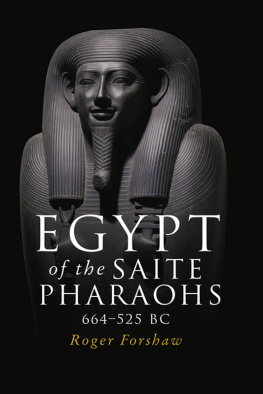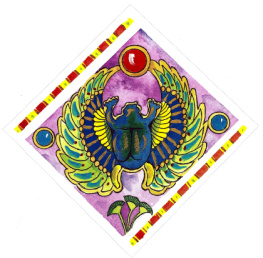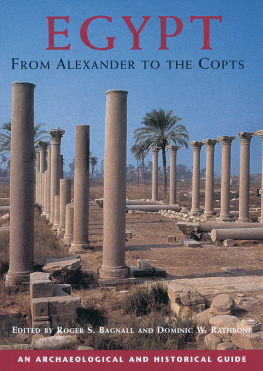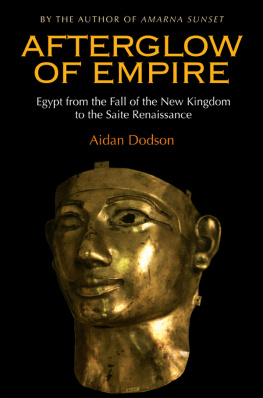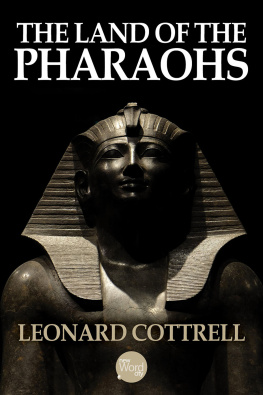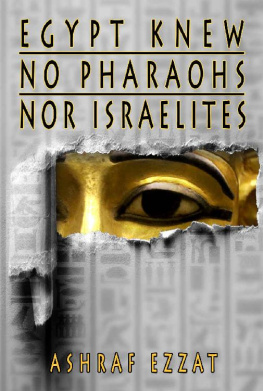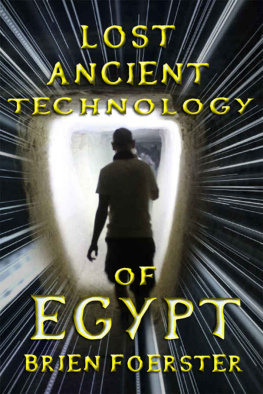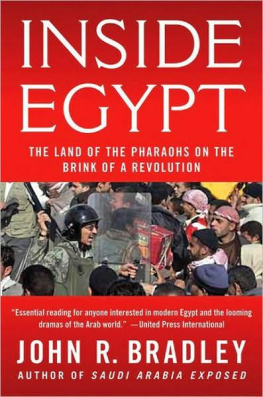Roger Forshaw - Egypt of the Saite pharaohs, 664–525 BC
Here you can read online Roger Forshaw - Egypt of the Saite pharaohs, 664–525 BC full text of the book (entire story) in english for free. Download pdf and epub, get meaning, cover and reviews about this ebook. year: 2019, publisher: Manchester University Press, genre: Religion. Description of the work, (preface) as well as reviews are available. Best literature library LitArk.com created for fans of good reading and offers a wide selection of genres:
Romance novel
Science fiction
Adventure
Detective
Science
History
Home and family
Prose
Art
Politics
Computer
Non-fiction
Religion
Business
Children
Humor
Choose a favorite category and find really read worthwhile books. Enjoy immersion in the world of imagination, feel the emotions of the characters or learn something new for yourself, make an fascinating discovery.
- Book:Egypt of the Saite pharaohs, 664–525 BC
- Author:
- Publisher:Manchester University Press
- Genre:
- Year:2019
- Rating:5 / 5
- Favourites:Add to favourites
- Your mark:
- 100
- 1
- 2
- 3
- 4
- 5
Egypt of the Saite pharaohs, 664–525 BC: summary, description and annotation
We offer to read an annotation, description, summary or preface (depends on what the author of the book "Egypt of the Saite pharaohs, 664–525 BC" wrote himself). If you haven't found the necessary information about the book — write in the comments, we will try to find it.
Egypt of the Saite pharaohs, 664–525 BC — read online for free the complete book (whole text) full work
Below is the text of the book, divided by pages. System saving the place of the last page read, allows you to conveniently read the book "Egypt of the Saite pharaohs, 664–525 BC" online for free, without having to search again every time where you left off. Put a bookmark, and you can go to the page where you finished reading at any time.
Font size:
Interval:
Bookmark:
Egypt of the Saite pharaohs, 664525 BC  Egypt of the Saite pharaohs, 664525 BC Roger Forshaw Manchester University Press Copyright Roger Forshaw 2019 The right of Roger Forshaw to be identified as the author of this work has been asserted by him in accordance with the Copyright, Designs and Patents Act 1988. Published by Manchester University Press Altrincham Street, Manchester M1 7JA www.manchesteruniversitypress.co.uk British Library Cataloguing-in-Publication Data A catalogue record for this book is available from the British Library ISBN978 1 5261 4014 2hardback First published 2019 The publisher has no responsibility for the persistence or accuracy of URLs for any external or third-party internet websites referred to in this book, and does not guarantee that any content on such websites is, or will remain, accurate or appropriate. Typeset by Toppan Best-set Premedia Limited It is said that the reign of Amasis (Ahmose II) was a time of unexampled material prosperity for Egypt; the river gave its riches to the earth and the earth to the people. Herodotus (II, 177) Most histories of ancient Egypt focus on the perceived high-points of the civilisation, rarely giving much credence to anything that happened after the death of King Ramesses II around 1200 BC. The artificial impression of progressive steps of development towards the climax of the New Kingdom assumes an inevitable decline thereafter. Of course, history is never so simple. Egypt's 26th Dynasty has suffered particularly poor publicity amongst non-specialists because of a lack of coherent archaeological finds or readily identifiable royal sculptures, but also due to the preponderance of rather non-Egyptian-sounding names like Psamtek and Apries. The recent initial misidentification of a colossus of Psamtek I as his much more illustrious predecessor Ramesses II is a case in point. Few might have expected that such a giant statue, found in fragments at Heliopolis in 2017 apparently a newly commissioned sculpture rather than a usurped one would have belonged to a king of the Saite Period. Yet the well-known Histories of Herodotus describe several such statues at the capital, Sais, and their cult is attested by the titles of a number of individuals. The Saite Period is, as Roger Forshaw emphasises, one of resurgent power in terms of relatively strong internal unity and expansionist ambition. It was also one of acute historical awareness, drawing on over two millennia of established Pharaonic history, no doubt inspired by a consciousness of the ruling Dynasties Libyan roots. This combination of features makes the Saite Period of particular interest to historians of both Egypt and comparable peoples. Roger Forshaw provides an extensive survey of Egypt at this time, drawing together disparate material little known outside a handful of specialists. The author is to be congratulated for presenting this in a form that is both accessible and honest about the drawbacks of our source material something students of ancient history, especially that of Egypt, perhaps need to consider. Dr Campbell Price Curator of Egypt and Sudan, Manchester Museum The University of Manchester, August 2018 I have always been fascinated by ancient history, but it was not until I took early retirement from my career as a dental surgeon that I was able to pursue this subject in some depth. A chance encounter with a magazine on ancient Egypt kindled my attraction for this particular culture, and I soon became an avid reader and student of all things related to Egyptology. I was able to combine this new interest with a study of ancient dentistry when undertaking a Master's Degree in Biomedical Egyptology at the University of Manchester in 2006. My further studies in Egyptology culminated in attaining a PhD in 2013 on The Role of the Lector in Ancient Egyptian Society, a work which is now published. My specific interest in the Saites arose from my early online studies at Exeter University with Dr Robert Morkot when I not only became intrigued by the Saite Dynasty but realised that the 26th Dynasty seemed less well known and under-published compared with many of the other periods in Egyptian Pharaonic history. The Saite Period was a high-achieving one historically, and is often neglected in the literature dedicated to ancient Egypt. I became committed in attempting to understand, research and put into print an account of this enthralling early time, an undertaking that has taken me a number of years. The reader who has an interest in ancient Egypt may be unaware of the dynamic nature of this period, of the astuteness of the Saite rulers and their considerable achievements in the political, economic, administrative and cultural spheres. The story of Saite Egypt is a fast-moving epic, a time of no mean achievement. Within a period of under ten years, Psamtek I, the first ruler of the Saite Dynasty, reunited a politically divided country after almost four hundred years of disunity and bouts of foreign domination. The Saites then re-established central government, reformed the economy and promoted trade, and the country grew wealthier. Egypt achieved a pre-eminent role in the Mediterranean world and was able to preserve its independence as a sovereign state for over 140 years against powerful foreign adversaries. I am truly indebted to Dr Campbell Price, curator of Egypt and Sudan at the Manchester Museum, for his many helpful comments and scholarship during the preparation of this book, a topic with which he is also fascinated. I am pleased that he kindly agreed to write a foreword to this volume. My grateful thanks to Associate Professor Penny Wilson from the University of Durham for her very many observations, useful suggestions and insight into this period. I would like to thank the anonymous reviewers of the book for their very many helpful comments. Also, my thanks to those who kindly supplied images for use in the book Aidan Dodson, Sarah Griffiths, Glenn Janes, Peter Phillips, Campbell Price, Dietrich Raue, Penny Wilson and the Egypt Exploration Society. Lastly, to Meredith Carroll and all at Manchester University Press for their assistance in finally helping to bring this project to fruition. Roger Forshaw
|
Font size:
Interval:
Bookmark:
Similar books «Egypt of the Saite pharaohs, 664–525 BC»
Look at similar books to Egypt of the Saite pharaohs, 664–525 BC. We have selected literature similar in name and meaning in the hope of providing readers with more options to find new, interesting, not yet read works.
Discussion, reviews of the book Egypt of the Saite pharaohs, 664–525 BC and just readers' own opinions. Leave your comments, write what you think about the work, its meaning or the main characters. Specify what exactly you liked and what you didn't like, and why you think so.

